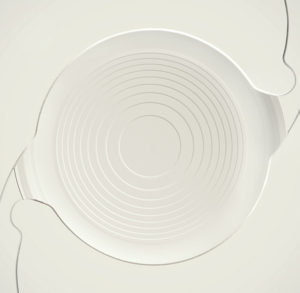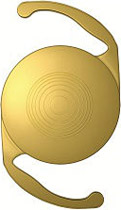
The Crystalens is an intraocular lens that is implanted during cataract surgery after the cataract has been removed. In contrast to a standard monofocal lens, the Crystalens allows patients to see both far and near in focus.
Unique to this lens is that it is essentially a monofocal lens that dynamically flexes inside the eye. The Crystalens utilizes the natural muscles within the eye to adjust its shape, and thereby, its effective power within the eye. As a result, there is range of vision that is in focus, not just two separate far and near distances.
Because the Crystalens depends on the muscles of the eye to focus between far and near, its effect can be variable, depending on the strength of the eye muscles. Although some patients can see a large range of distances in focus, the majority are only able to see two of the key distances in focus, usually from far (TV, driving) to intermediate (computers, reading newspaper). Rarely, the range is less, with the Crystalens appearing to move only minimally. The effective range is not age-dependent, and cannot be predicted before surgery.


